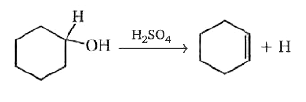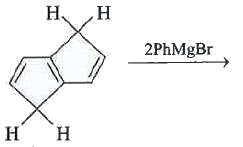Which of the followig reaction is not a ion-exchange reaction?
Pb(NO3)2+2KI→PbI2⏐↓+2KNO3
KNO2+AgF→AgNO2↓+KF
2AgF+MgCl2→MgF2↓+2AgCl↓
CaSO3(ppt)+SO2+H2O→Ca(HSO3)2
The correct Answer is:D
To determine which of the following reactions is not an ion-exchange reaction, we first need to understand what an ion-exchange reaction entails. In an ion-exchange reaction, ions from two different compounds swap places to form new compounds.
1. Understand Ion-Exchange Reactions:
- In an ion-exchange reaction, cations and anions from two ionic compounds exchange partners. For example, if we have two ionic compounds, A+X- and B+Y-, the exchange would result in A+Y- and B+X-.
2. Analyze the Given Options:
- We need to look at each option provided and determine if they involve the exchange of ions.
3. Option A: Lead Nitrate Reaction
- The reaction involves lead ions (Pb2+) and nitrate ions (NO3-), forming PbI2. Here, the nitrate ions are replaced by iodide ions (I-). This is an ion-exchange reaction.
4. Option B: Nitrite and Fluoride Reaction
- In this reaction, nitrite ions (NO2-) are replaced by fluoride ions (F-). This is also an ion-exchange reaction.
5. Option C: Chloride Ion Reaction
- Here, chloride ions (Cl-) are exchanged, forming AgCl and MgF2. This is again an ion-exchange reaction.
6. Option D: Combination Reaction
- In this case, three reactant molecules combine to form a single product without any ions being exchanged. This is a combination reaction, not an ion-exchange reaction.
7. Conclusion:
- Since option D is the only one that does not involve the exchange of ions, it is the correct answer.
Final Answer:
The reaction that is not an ion-exchange reaction is Option D.
- In an ion-exchange reaction, cations and anions from two ionic compounds exchange partners. For example, if we have two ionic compounds, A+X- and B+Y-, the exchange would result in A+Y- and B+X-.
- We need to look at each option provided and determine if they involve the exchange of ions.
- The reaction involves lead ions (Pb2+) and nitrate ions (NO3-), forming PbI2. Here, the nitrate ions are replaced by iodide ions (I-). This is an ion-exchange reaction.
- In this reaction, nitrite ions (NO2-) are replaced by fluoride ions (F-). This is also an ion-exchange reaction.
- Here, chloride ions (Cl-) are exchanged, forming AgCl and MgF2. This is again an ion-exchange reaction.
- In this case, three reactant molecules combine to form a single product without any ions being exchanged. This is a combination reaction, not an ion-exchange reaction.
- Since option D is the only one that does not involve the exchange of ions, it is the correct answer.
The reaction that is not an ion-exchange reaction is Option D.
Topper's Solved these Questions
- BOOK - RESONANCE ENGLISHCHAPTER - TEST PAPERSEXERCISE - PT-0130videos
TEST PAPERS
- BOOK - RESONANCE ENGLISHCHAPTER - TEST PAPERSEXERCISE - Pt-0230videos
TEST PAPERS
- BOOK - RESONANCE ENGLISHCHAPTER - TEST PAPERSEXERCISE - PART - III CHEMISTRY20videos
TEST PAPERS
- BOOK - RESONANCE ENGLISHCHAPTER - SURFACE CHEMISTRYEXERCISE - Section - 51videos
SURFACE CHEMISTRY
- BOOK - RESONANCE ENGLISHCHAPTER - TEST SERIESEXERCISE - CHEMISTRY50videos
TEST SERIES
Similar Questions
Knowledge Check
- Question 1 - Select One
Which one of the following reactions is not a redox reaction ?
AH++OH−→H2OBZn+2HCl→ZnCl2+H2C12H2+12Cl2→HClDZn+12O2→ZnO - Question 2 - Select One
Which of the following reaction is an elimination reaction ?
A B
B C
C Dboth (a) and (b)
Dboth (a) and (b) - Question 3 - Select One or More
Which of the following reactions give aromatic ion ?
A B
B C
C D
D
Which of the following reactions is a decomposition reaction ?
View SolutionWhich of the following reactions is not a disproportination reaction ?
View SolutionWhich of the following reactions are disproportionation reaction ?
View SolutionWhich of the following reaction is an example of elimination reaction :
View SolutionWhich of the followig is not an A.P?
View Solution


